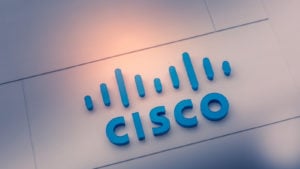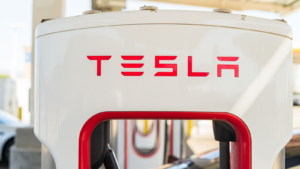From the field of cutting-edge AI infrastructure to the corridors of software dominance and the highways of autonomous driving, these companies stand at the edge.
These companies breed fundamentals for massive value growth. The first one, with its data center tech, revolutionizes AI. Meanwhile, the second one’s strategic pivot towards software signals a paradigm shift in networking solutions. Finally, the third one’s relentless moves towards autonomous driving perfection set the stage for a transportation revolution.
Read more to uncover the untapped potential of these mega-trend stocks. They may elevate portfolios and generate super returns for years.
NVIDIA (NVDA)

At the core of NVIDIA’s (NASDAQ:NVDA) Data Center driver is the HGX platform. This is a vital component based on the Hopper Tensor Core GPU architecture. The platform and InfiniBand end-to-end networking have driven record revenue growth. This suggests its significance in powering AI supercomputers and data center infrastructures.
Fundamentally, applications such as Adobe (NASDAQ:ADBE) Firefly, ChatGPT, Microsoft (NASDAQ:MSFT) 365 Copilot, CoAssist, ServiceNow (NYSE:NOW), and Zoom (NASDAQ:ZM) AI Companion run on NVIDIA, showcasing the platform’s versatility and compatibility with diverse AI applications.
Furthermore, the year-over-year quadrupling of data center compute revenue (Q3 Fiscal 2024) accentuates the booming reliance on NVIDIA’s accelerated computing infrastructure. The Data Center segment generated $14.5 billion in quarterly revenue, demonstrating solid sequential growth of 41% and a massive year-on-year increase of 279%.
Similarly, investments in infrastructure for training and inferencing large language models, deep learning, recommender systems and generative AI applications further propel NVDA’s growth. In detail, the architecture holds a significant leap forward regarding AI processing capabilities, offering higher computational density and efficiency. Hopper’s design is optimized for the demands of AI workloads. This provides the necessary performance for training and inferencing tasks.
Finally, cloud service providers (CSPs) play a crucial role in NVIDIA’s data center revenue expansion, contributing roughly half of the revenue in Q3. The strong demand from hyperscale CSPs and GPU-specialized CSPs globally signifies NVIDIA’s edge in capitalizing on new market demand in AI. Hence, the availability of NVIDIA H100 Tensor Core GPU instances across various clouds, with high-demand instances, further solidifies the company’s reach and market valuation potential.
Cisco (CSCO)

Cisco’s (NASDAQ:CSCO) performance is a key strength supporting its potential for rapid value growth. For instance, in Q1 2024, Cisco achieved its strongest first-quarter results in history, with revenue at the upper end of the guided range. The $14.7 billion in revenue marked an 8% year-over-year increase, highlighting the company’s consistent growth.
At the bottom line, the EPS exceeded the high end of guidance. This demonstrates the company’s operational efficiency and ability to control expenses. This is based on robust gross margins and disciplined expense management. Cisco’s highest non-GAAP gross margin in over 17 years (67.1%) signifies the lead of its business model transformation and focus on operational excellence. Thus, productivity enhancements and favorable pricing improved the gross margin.
Furthermore, returning $2.8 billion to shareholders through cash dividends and share repurchases reflects Cisco’s focus on generating value for investors. Also, such massive share repurchases signal the company’s move to take strategic advantage of undervaluation.
Fundamentally, there is an ongoing transformation towards software and recurring revenue streams. This can be observed in the 13% increase in total software revenue to $4.4 billion, with 85% being subscription-based. Hence, this diversification boosts topline predictability and progressiveness.
On the other hand, Cisco’s strategic acquisitions and focus on growth areas breed the potential for rapid value expansion. The intent to acquire Splunk (NASDAQ:SPLK) aligns with Cisco’s strategy to uplift its data platform. The acquisition supports digital resiliency and AI security and drives higher levels of growth. Thus, this acquisition reinforces Cisco’s focus on strategic objectives and expanding capabilities.
Finally, Cisco has an edge in the AI infrastructure space. There is a projection of over $1 billion in orders for AI infrastructure from major cloud providers in fiscal 2025, which suggests its focus on high-growth areas that, in turn, propel its market valuation.
Tesla (TSLA)

Tesla’s (NASDAQ:TSLA) advancements in full self-driving (FSD) are a primary basis for supporting its market valuation. The release of Version 12, representing a complete architectural rewrite for full self-driving, demonstrates Tesla’s lead in advancing autonomous driving technology.
In detail, replacing 330K lines of C++ code with neural nets indicates a leap in AI efficiency. This positions Tesla at the edge of AI progress in the automotive industry. The shift from traditional code to neural nets reflects Tesla’s moat in leveraging cutting-edge tech for real-world applications.
Notably, Tesla claims to be the most efficient company in the world for AI inference. Deeper, Tesla’s advancements in FSD cater to safety and efficiency and enhance the overall customer experience. This may increase customer loyalty and influence purchase decisions, boosting its topline.
Looking forward, the production of the next-generation vehicle towards the end of 2025 signals a significant product launch. Expecting a capital expenditure of over $10 billion in 2024 signals Tesla’s focus on investing in growth initiatives and cutting-edge manufacturing.
Moreover, Tesla’s ability to produce over 1.8 million vehicles beyond its official guidance suggests its manufacturing and supply chain management efficiency. In short, the company may continue to progress. This is based on streamlined production lines, optimized workflows, and leveraging automation to boost efficiency and scale operations.
Finally, an annualized run rate of nearly 2 million cars in Q4 indicates Tesla’s focus on capitalizing on growing EV demand. By maximizing FSD functionality and production capacity, Tesla may boost its valuations rapidly.
As of this writing, Yiannis Zourmpanos held a long position in NVDA. The opinions expressed in this article are those of the writer, subject to the InvestorPlace.com Publishing Guidelines.
Yiannis Zourmpanos is the founder of Yiazou Capital Research, a stock-market research platform designed to elevate the due diligence process through in-depth business analysis.
